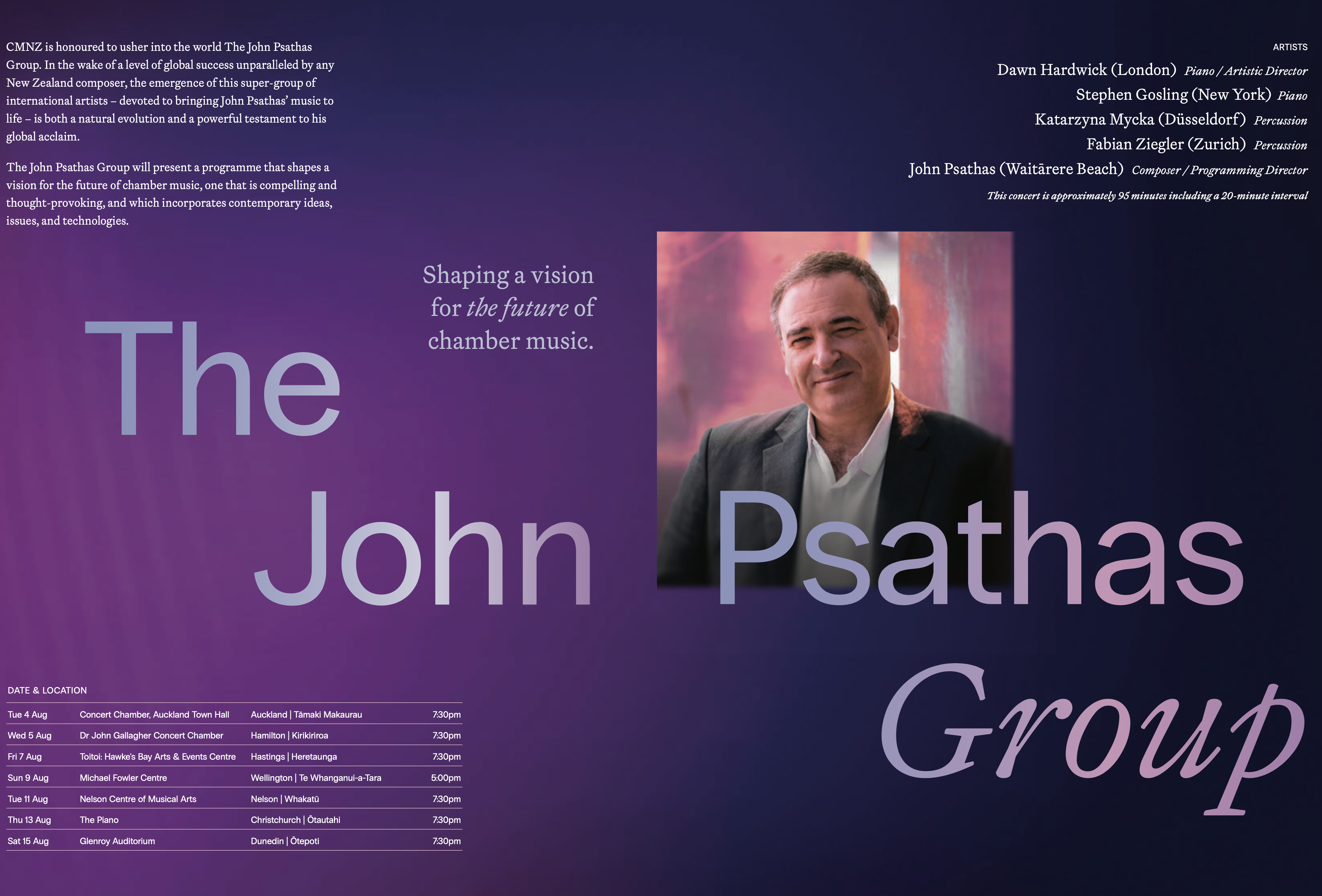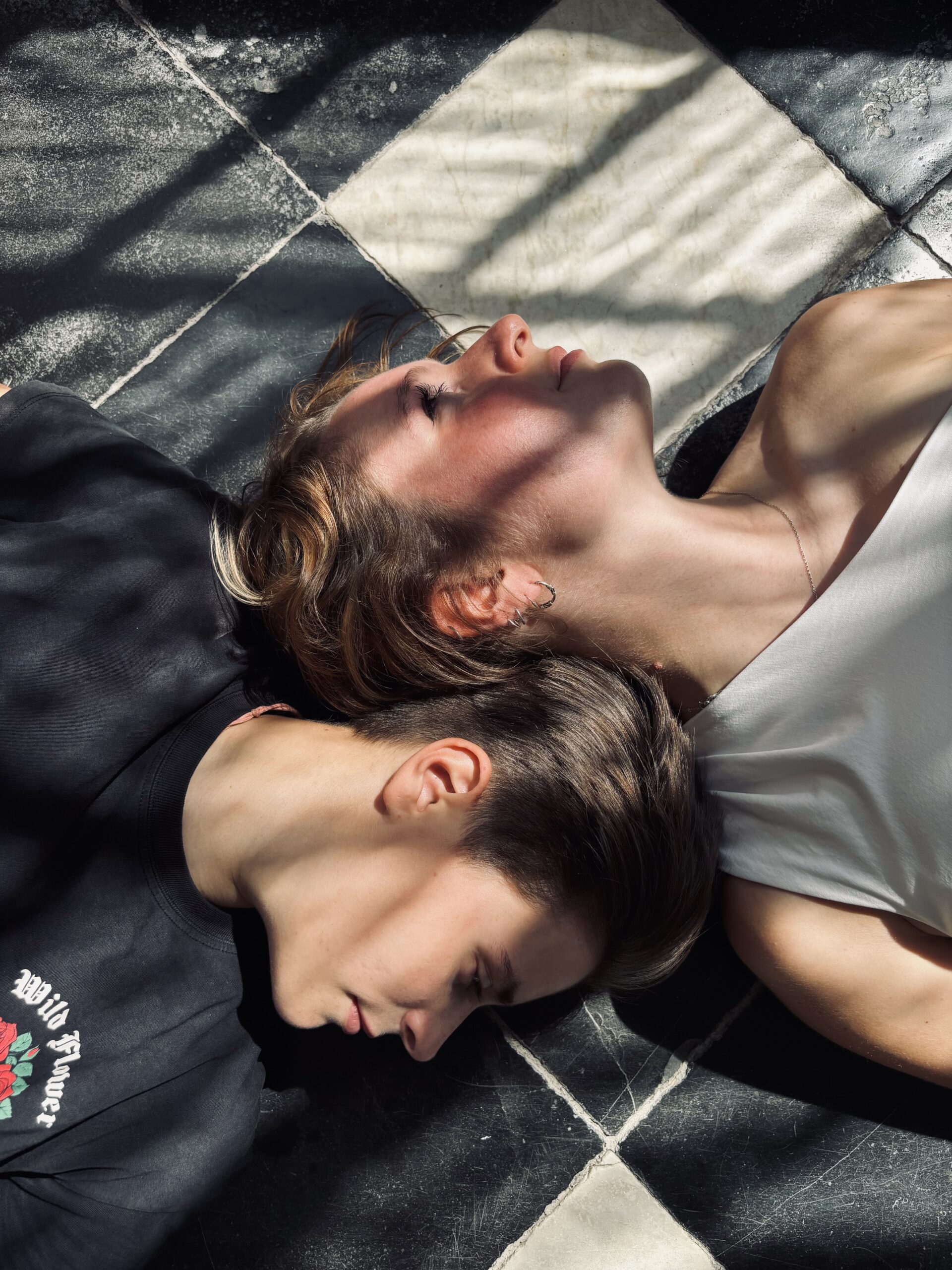
Koolish Zein (percussion solo, percussion quartet, audio track)
Overview
Koolish Zein is an orchestra-less concerto written for Michael Burritt and a consortium including James Campbell, Omar Carmenates, Scott Herring, Thad Anderson, Eric Willie, and Andrew Bliss.
In place of the symphony orchestra is a percussion quartet and a track of richly layered audio.
The soloist is the storyteller from start to finish, navigating an ever-changing terrain of dynamic textures and grooves.
The three parts of Koolish Zein each look to evoke resonances of an imagined future.
Her Alchemy emerges from women’s voices transformed digitally within the software Alchemy.
London Busking 2149 imagines what it might be like busking at Trafalgar Square some 125 years from now, evoked with the sound of flying vehicles coming and going, the loose quality of the music, and a duet with a passing robotic improvisor.
The up-tempo Trimetrical Hub (an anagram of Michael Burritt) begins in a Macedonian dance rhythm of 17/8 (4+6+7) and eventually transforms into a high-spirited groove inspired by a 6/8 Moroccan wedding dance.
Programme Note
Koolish Zein (2019) for solo percussion, percussion quartet, and digital audio
By Ioannis (John) Psathas
1. Her Alchemy 2. London Busking 2149 3. Trimetrical Hub
duration: 20 mins
for Michael Burritt
“Mu zein!” The Preacher said, waving his right hand in a cutting gesture. This is no good!
“Koolish Zein,” Leto said, voice soft. This is all the good we may ever have.
- from Frank Herbert’s Dune series
Koolish Zein is an orchestra-less concerto. In place of the symphony orchestra is a percussion quartet and a track of richly layered audio. The soloist is the storyteller from start to finish, navigating an ever-changing terrain of dynamic textures and grooves.
The three parts of Koolish Zein each look to evoke resonances of an imagined future. Her Alchemy emerges from women’s voices transformed digitally within the software Alchemy.
London Busking 2149 imagines what it might be like busking at Trafalgar Square some 125 years from now, evoked with the sound of flying vehicles coming and going, the loose quality of the music, and a duet with a passing robotic improvisor.
The up-tempo Trimetrical Hub (an anagram of Michael Burritt) begins in a Macedonian dance rhythm of 17/8 (4+6+7) and eventually transforms into a high-spirited groove inspired by a 6/8 Moroccan wedding dance.
Requirements
This work includes an audio backing track, requiring a stereo pair of high intensity audio monitors capable of delivering impact across the full frequency range. Each performer will need to listen to a click track via an in-ear monitor (a total of 5 in-ear monitors required).
It is advisable for each performer to use one in-ear monitor only, in order to be able to hear the backing track and the rest of the ensemble clearly through the other ear. All audio provided by the composer.
Full Instrumentation: (most instruments are shared)
2 marimbas (played with mallets and bows)
2 vibraphones (played with mallets and bows, motor used on both vibraphones) shakers and shekeres
crotales
4 djembes
bass drum
hi-hat
high and mid tom-tom
floor tom
suspended cymbals (sticks and mallets)
tubular bells (3 notes only)
tambourine
sleigh bells
dunun and 2 agogo bells
Commissioned by:
Michael Burritt – Eastman School of Music (lead commissioner)
James Campbell – University of Kentucky
Omar Carmenates – Furman University
Scott Herring – University of South Carolina
Thad Anderson – University of Central Florida
Eric Willie – University of North Carolina Greensboro
Andrew Bliss – University of Tennessee

Lead Commissioner: Michael Burritt,
Commissioner: Michael Burritt, James Campbell, Omar Carmenates, Scott Herring, Thad Anderson, Eric Willie, and Andrew Bliss
Instrumentation: Mar (2x), Vib (2x), Shakers, Shek, Crot, Djem (4x), BD, HH, Tom Toms, Sus Cymb, Tbells, Tamb, Sleigh Bells, Dunun , Agogo Bells (2x)
Premiered by Michael Burritt with Justin Lamb, Andrew Bockman,Emma Gierszal, YoungKyoung Lee, on March 28, 2020 at the Kilbourn Hall, New York, USA



















